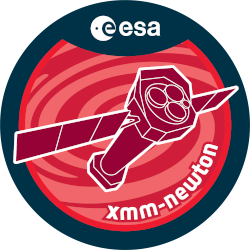

| Proposal ID | 067523 |
| Title | Polars - soft X-ray emitters? |
| Download Data Associated to the proposal | https://nxsa.esac.esa.int/nxsa-sl/servlet/data-action-aio?obsno=0675230101 |
| DOI | https://doi.org/10.5270/esa-93tcl4i |
| Principal Investigator, PI | Dr Axel Schwope |
| Abstract | The defining criterion of polars (AM Herculis stars) was their prominent softX-ray emission, which led to numerous discoveries with the EINSTEIN, EXOSAT,ROSAT and EUVE satellites. XMM-Newton observations of those X-ray selectedpolars and genuine discoveries of new polar systems reveal growing evidence thatthe prevailence or even the existence of a soft X-ray component may be ratherthe exception than the rule. In the last decade polars were discovered inoptical surveys like the SDSS and the CSS. Here we propose XMM-Newtonobservations of 5 optically selected polars to search for soft X-ray spectralcomponents, answer the question why they escaped detection in past X-ray surveysand shed new light on the intrinsic energy distribution of polars. |
| Publications |
|
| Instrument | EMOS1, EMOS2, EPN, OM, RGS1, RGS2 |
| Temporal Coverage | 2012-01-26T12:37:26Z/2012-04-10T20:59:28Z |
| Version | 17.56_20190403_1200 |
| Mission Description | The European Space Agencys (ESA) X-ray Multi-Mirror Mission (XMM-Newton) was launched by an Ariane 504 on December 10th 1999. XMM-Newton is ESAs second cornerstone of the Horizon 2000 Science Programme. It carries 3 high throughput X-ray telescopes with an unprecedented effective area, and an optical monitor, the first flown on a X-ray observatory. The large collecting area and ability to make long uninterrupted exposures provide highly sensitive observations. Since Earths atmosphere blocks out all X-rays, only a telescope in space can detect and study celestial X-ray sources. The XMM-Newton mission is helping scientists to solve a number of cosmic mysteries, ranging from the enigmatic black holes to the origins of the Universe itself. Observing time on XMM-Newton is being made available to the scientific community, applying for observational periods on a competitive basis. |
| Creator Contact | https://www.cosmos.esa.int/web/xmm-newton/xmm-newton-helpdesk |
| Date Published | 2013-04-25T00:00:00Z |
| Last Update | 2025-08-04 |
| Keywords | "XMM", "past xray surveys", "numerous discoveries", "XMM-Newton", "optical surveys", "soft xray component", "polar systems", "escaped detection", "xmm newton", "ROSAT", "SDSS", "growing evidence", "euve satellites", "genuine discoveries", "defining criterion", "decade polars", "energy distribution" |
| Publisher And Registrant | European Space Agency |
| Credit Guidelines | European Space Agency, Dr Axel Schwope, 2013, 'Polars - soft X-ray emitters?', 17.56_20190403_1200, European Space Agency, https://doi.org/10.5270/esa-93tcl4i |